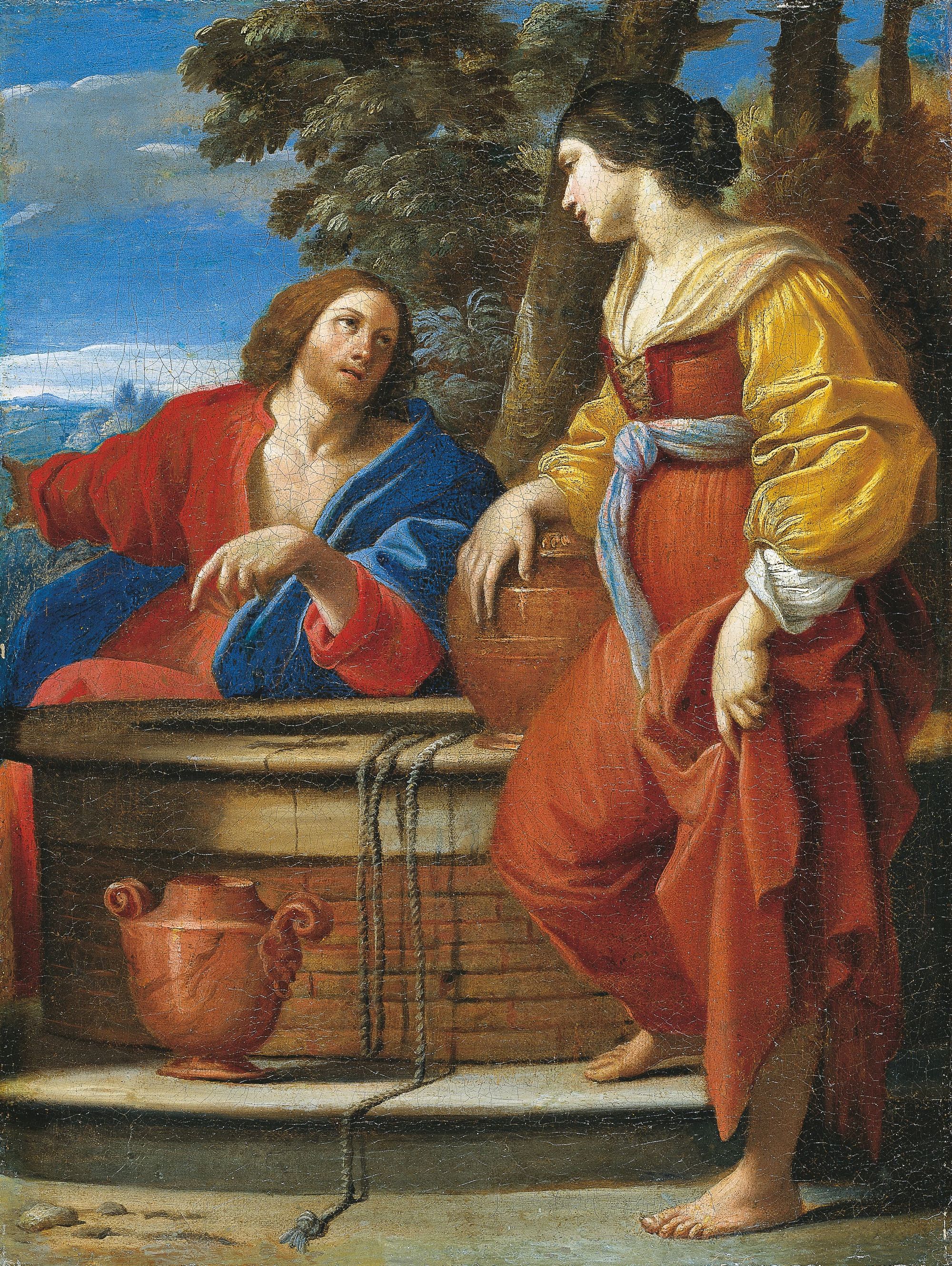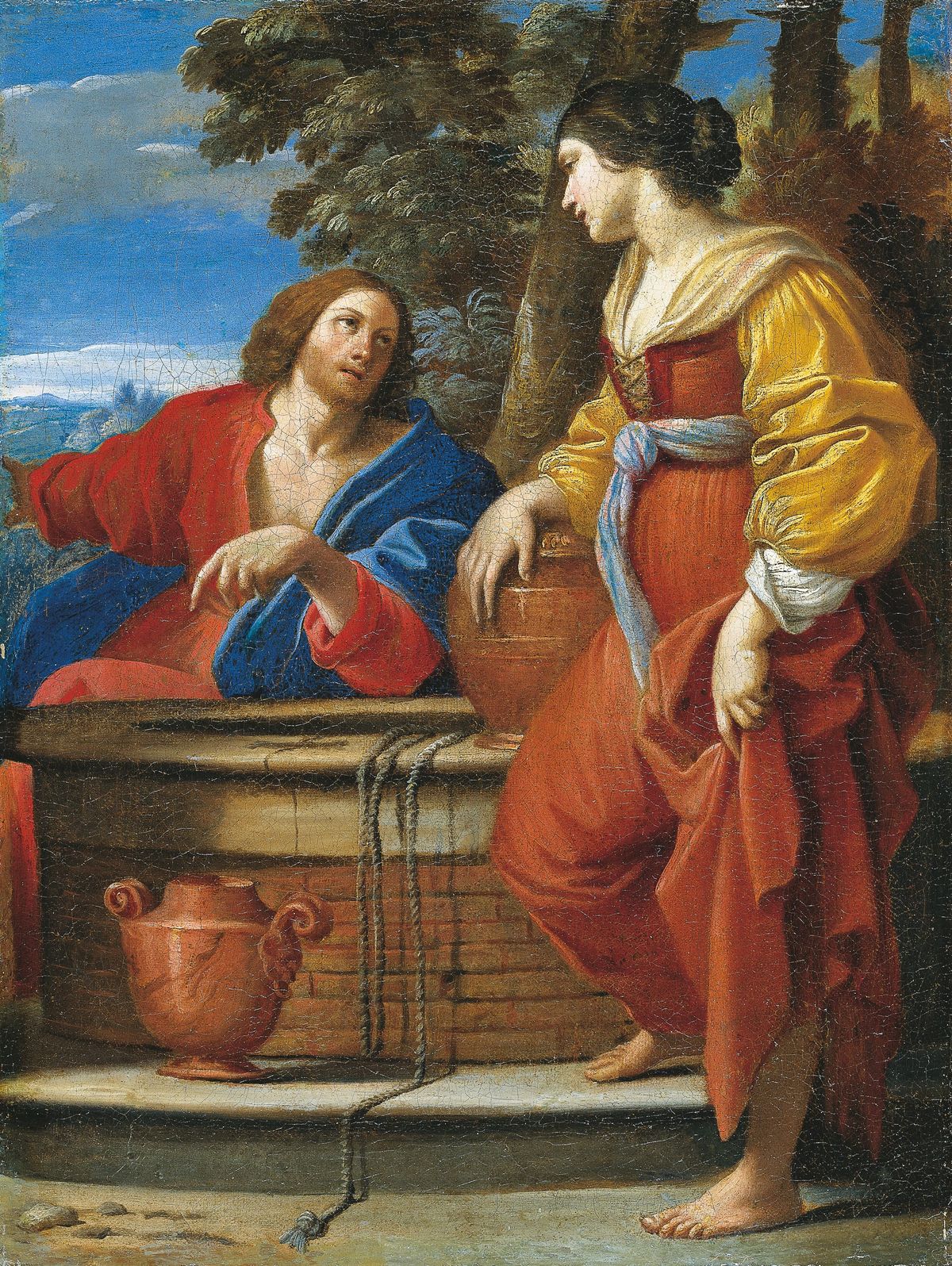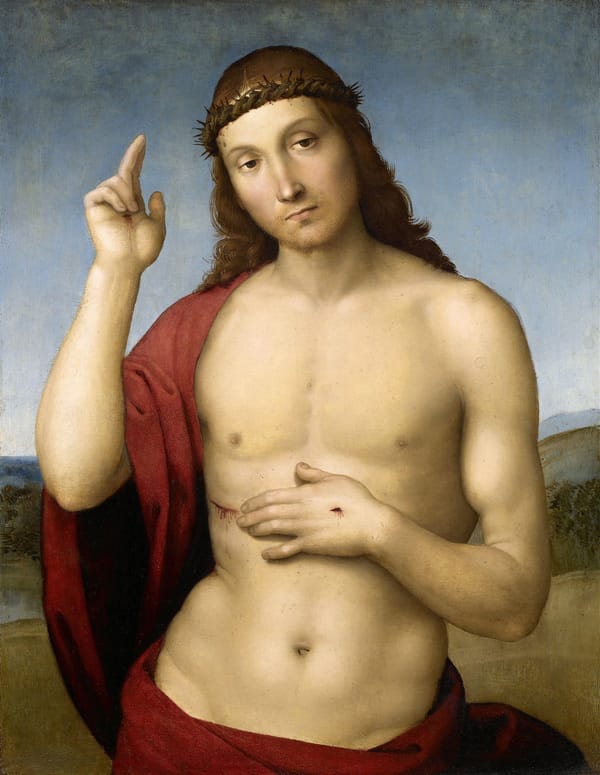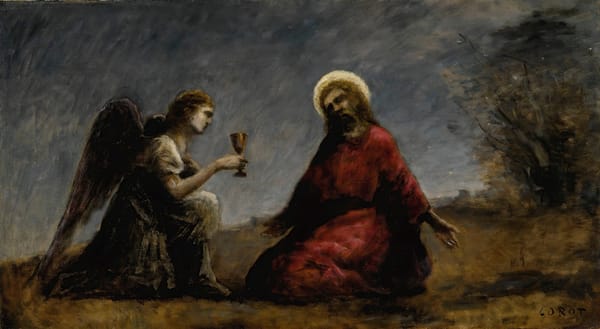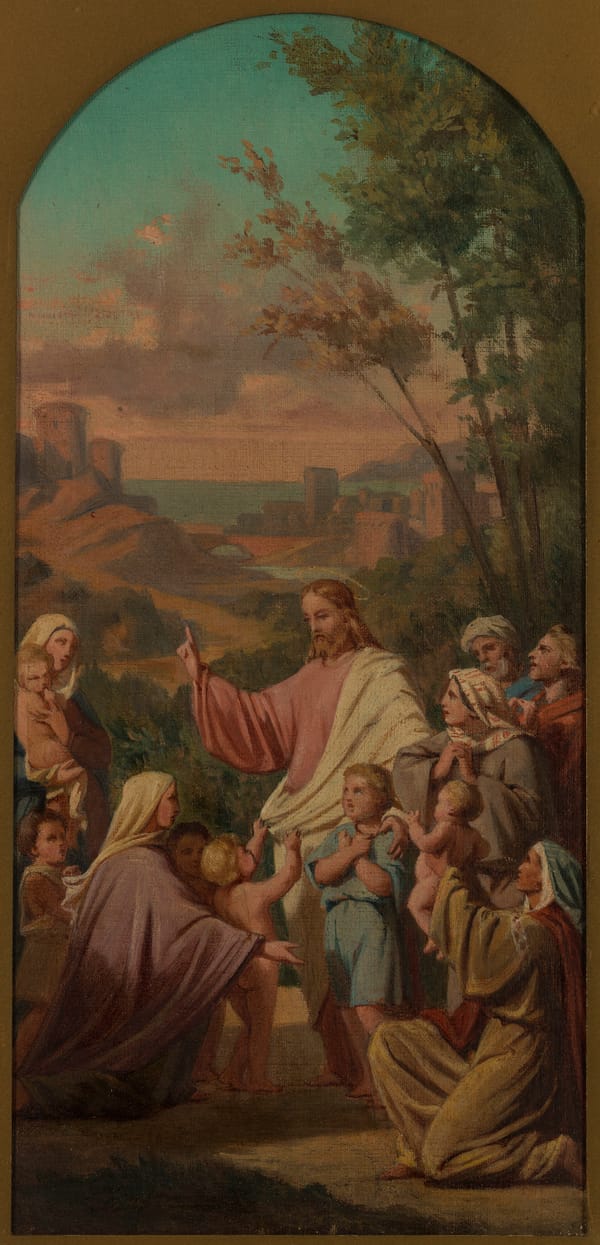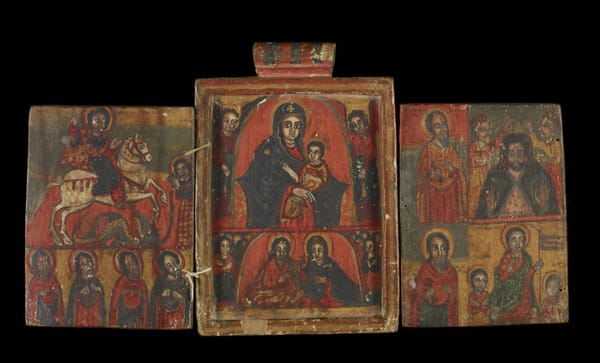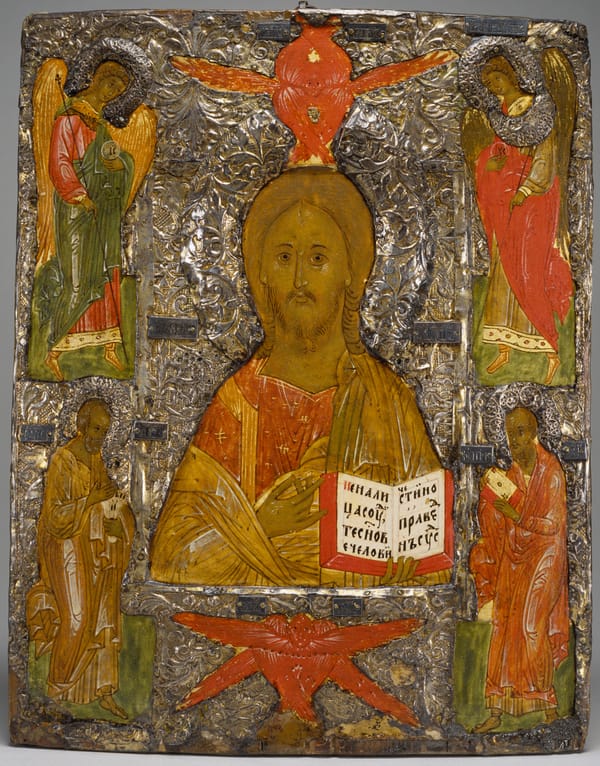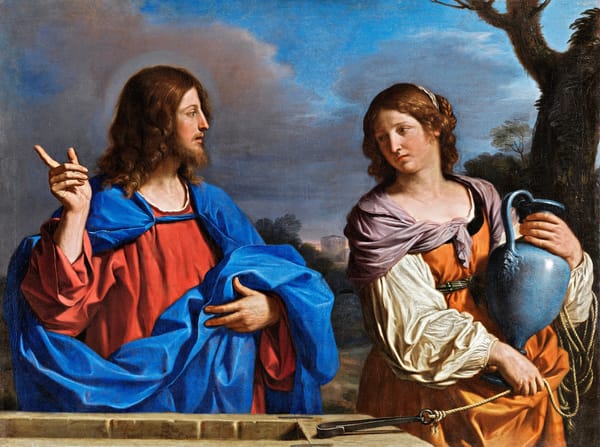About the Image:
"Christ with the Samaritan Woman at the Well" painted by Sisto Badalocchio between 1609 and 1610 is a beautiful representation of a pivotal biblical story, capturing a moment of profound spiritual revelation and understanding. The artwork delves deep into the theme of divine grace, redemption, and Christ's message of living water. Let's explore this evocative piece in detail:
Narrative:
The painting is based on the Gospel of John (John 4:4-26), where Jesus, during his journey, stops at a well in Samaria. He encounters a Samaritan woman and asks her for water. This simple request leads to a deep theological conversation, culminating in Jesus revealing his identity as the Messiah. This encounter is significant as it breaks cultural and ethnic boundaries of the time, emphasizing the universality of Christ's message.
Key Elements:
- Figures and Interaction: The central focus is on Christ and the Samaritan woman, and their intense, direct interaction. Jesus' calm and penetrating gaze meets the slightly bowed head of the woman, indicating her reverence and realization. Their gestures and postures underline the profound spiritual exchange happening between them.
- Setting and Symbolism: The well is prominently featured, symbolizing the "living water" or eternal life that Christ offers. It serves as both a literal and metaphorical element, emphasizing the depth of Christ's teachings and the salvation he promises.
- Colors and Composition: Badalocchio employs vibrant colors - the rich reds and blues of Jesus' attire contrast with the warm tones of the Samaritan woman's dress. This color differentiation not only adds visual appeal but also underscores the divine nature of Christ against the earthly realm of the woman.
- Attention to Detail: Notice the intricacies like the texture of the stone well, the pottery, and the natural backdrop. Such details add realism to the scene and anchor the spiritual exchange in a tangible, earthly setting.
Artistic Style:
Sisto Badalocchio was influenced by the Carracci family, particularly Annibale Carracci, which is evident in his style that marries the classical with the naturalistic. The balance between realistic depiction and the emotional intensity is a hallmark of the Baroque period, aiming to draw the viewer into the narrative, making the divine accessible and relatable.
Significance:
This artwork is not merely a portrayal of a biblical event but a meditation on Christ's message of spiritual rebirth, grace, and the universality of salvation. The encounter with the Samaritan woman underscores the idea that faith and redemption are available to all, regardless of ethnic, cultural, or social boundaries.
In summary, "Christ with the Samaritan Woman at the Well" by Sisto Badalocchio beautifully encapsulates a moment of divine revelation and human recognition. Through masterful composition, color, and detail, the artist invites viewers to reflect on the depth of Christ's teachings and the transformative power of faith.
